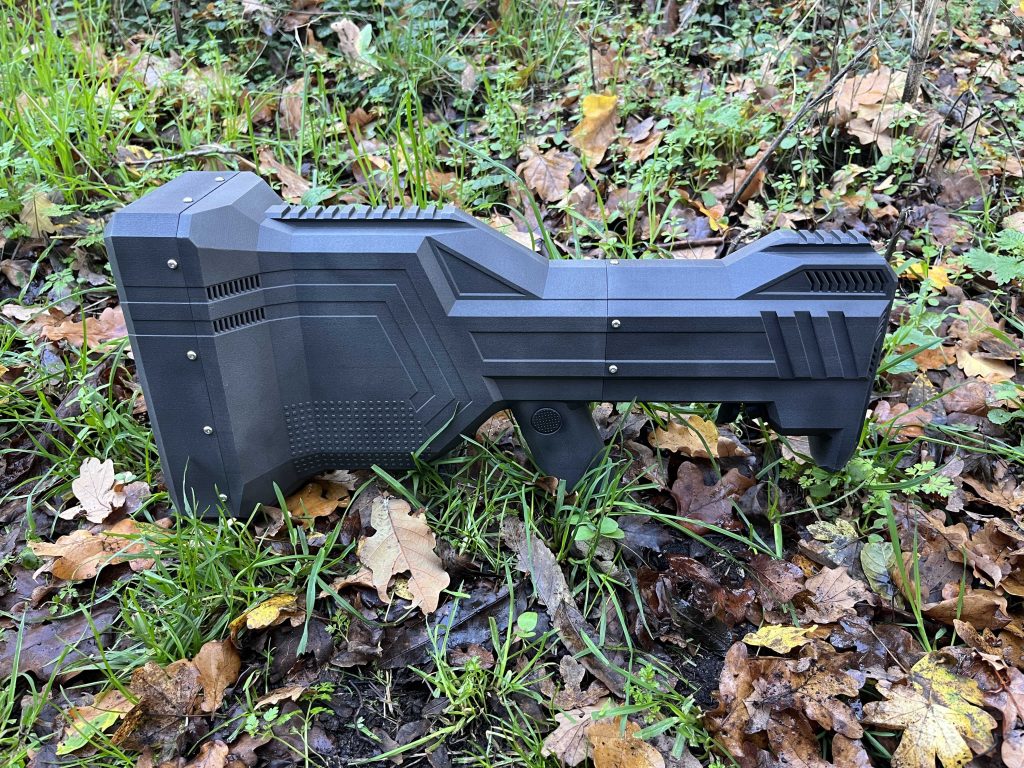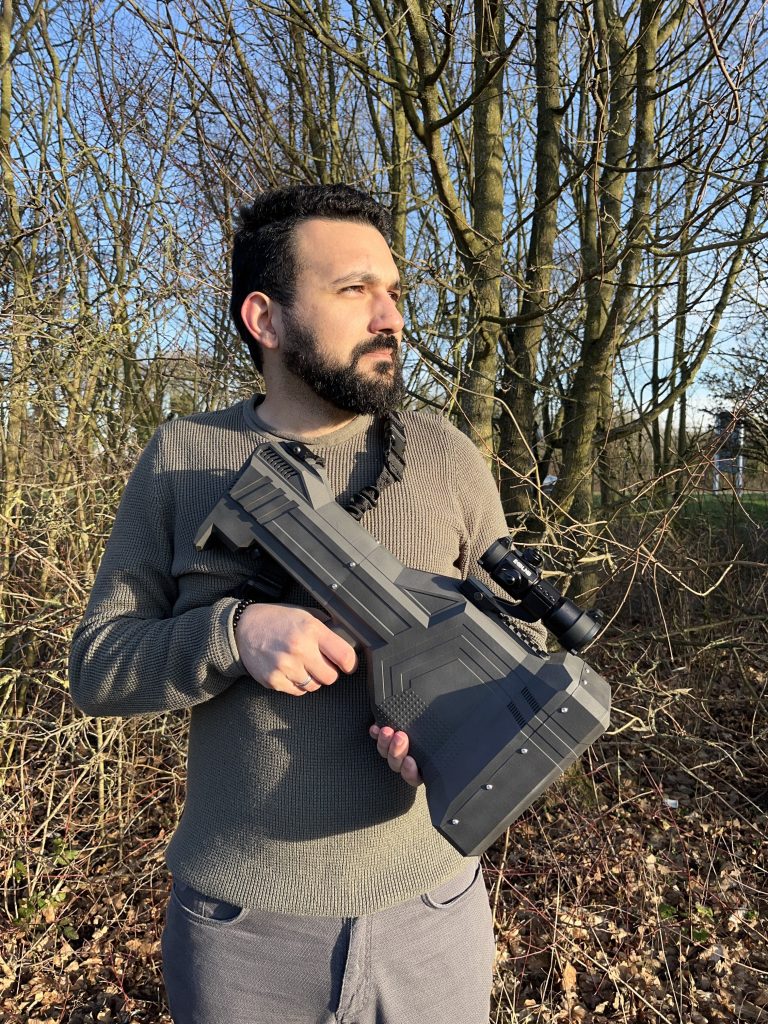British defense startup London Defense R&D has launched the LD-80 anti-drone. The company claims that this is the world’s first 3D printed drone defense system.
3D Printing Industry spoke with London Defense R&D founder Aytekin Güçlü to learn more about the LD-80, and what’s next for 3D printing and the defense industry.
Commercially available drones have been increasingly deployed in combat roles, especially within the ongoing conflict in Ukraine. The company claims that their new offering makes anti-drone capabilities more accessible to those who would otherwise struggle to purchase such defense systems. Rather than shipping defense hardware across borders, most of the LD-80 can be 3D printed in the field using Multi Jet Fusion (MJF) 3D printing technology.
“The main reason for producing the LD-80 using 3D printed manufacturing technology is to make defense accessible to everyone. It eliminates complex and challenging customs and logistics processes,” claims Güçlü.
The World’s first 3D printed anti-drone system
According to Güçlü, the majority of the LD-80’s shell and some of the functional parts can be 3D printed, with at least 60% of the entire system produced using MJF 3D printing technology. Additional components such as the electronics, the battery and antenna can be sourced separately from the company. Though this does raise some questions regarding the true “decentralizing” aspect of the product, the benefits of being majority 3D printable should not be ignored.
One key benefit of using 3D printing is design freedom and durability. Güçlü notes that utilizing 3D printing has enabled the company to “easily implement design criteria that are not possible with traditional mold-based production methods or require difficult and expensive processes.” This has allowed for the production of a more durable and ergonomic product.
The LD-80 also incorporates a warfare antenna with a range of 1000 meters, producing high powered electrical signals to target and neutralize enemy drones. The antenna supports multiple frequencies, transmitting high power signals over long distances using a narrow broadcast from a small area.
Güçlü highlights that the antenna has been specifically designed and developed for this anti-drone handheld system, “making the product lighter and more compact than its competitors.” The compact and lightweight nature of the LD-80 is certainly a bonus for this system, making it easy to carry and transport alongside other weapons systems on the battlefield.

Target market and key use cases
The LD-80 has acquired official United Kingdom Intellectual Property Office (IPO) certification, and has already seen use in a variety of environments. “The first few LD-80 systems were used in Ukraine shortly after the start of the Ukrainian occupation,” explains Güçlü. “It was used directly in active areas while field testing the system was also expected.”
Away from Ukraine, London Defense R&D has collaborated with their Operational and Sales partners at Drone Secure Ltd & UAS Global (PVT) Ltd to conduct further testing. These UAV industry specialists are testing the LD-80 in a variety of diverse environments. According to Güçlü, these tests have produced good results in the Middle East and South Asia, with the company receiving positive feedback. “We aim to constantly improve our product as we learn more from our trials and field tests,” states Güçlü.
The LD-80 is not limited to conventional warfare and defense applications. Güçlü highlights VIP personnel protection and the protection of tactical teams as being ideal uses for the anti-drone system. “The LD-80 stands out as a small, lightweight, and affordable solution that can be used by Law Enforcement as well as the Armed Forces globally.”
Looking to the future, London Defense R&D will continue to leverage 3D printing technology in their upcoming projects. Güçlü comments that the potential offered by additive manufacturing “protects us from hard-to-reach research and development costs while enabling the rapid prototyping of products.”

3D printing and the defense industry
Güçlü envisages growing use of 3D printing in the production of weaponry and military equipment in the future. “Much of the equipment we see on a soldier today can be completely produced using 3D printing technologies in the future,” comments Güçlü. “Conventional weapons will be manufactured using 3D manufacturing technologies not only for plastic parts but also for metal parts exposed to high heat and pressure.”
Leveraging additive manufacturing for defense applications is nothing new. Last July, it was announced that the Royal Air Force (RAF) was developing 3D printed combat drones to make up a new aerial attack unit. UK military officials announced that these drones would be deployed as “swarms”, and can be fitted with munitions to destroy strategic targets. With the project costing upwards of £4 million, it is understood that the drones possess a wide array of configurations. These range from those similar to off-the-shelf models, to larger models capable of carrying larger payloads.
Elsewhere, the US Navy has equipped Xerox 3D printing technology onto the USS Essex, a Wasp-class amphibious assault ship. This technology is said to improve self-sufficiency aboard the Essex, by enabling on-demand metal 3D printing. Lt. Cmdr. Nicolas Batista, the Aircraft Intermediate Maintenance Department (AIMD) officer of the USS Essex, stated that “Having this printer aboard will essentially accelerate, enhance and increase our warfighting readiness. The capabilities of the 3D printer will enable Essex to become more self-sufficient.”
Subscribe to the 3D Printing Industry newsletter to ensure you keep up with the latest 3D printing news. You can also follow us on Twitter, like our Facebook page, and subscribe to the 3D Printing Industry Youtube channel to access more exclusive content.
Are you interested in working in the additive manufacturing industry? Visit 3D Printing Jobs to view a selection of available roles and kickstart your career.
Featured image shows the LD-80 anti-drone system. Photo via London Defense R&D.


